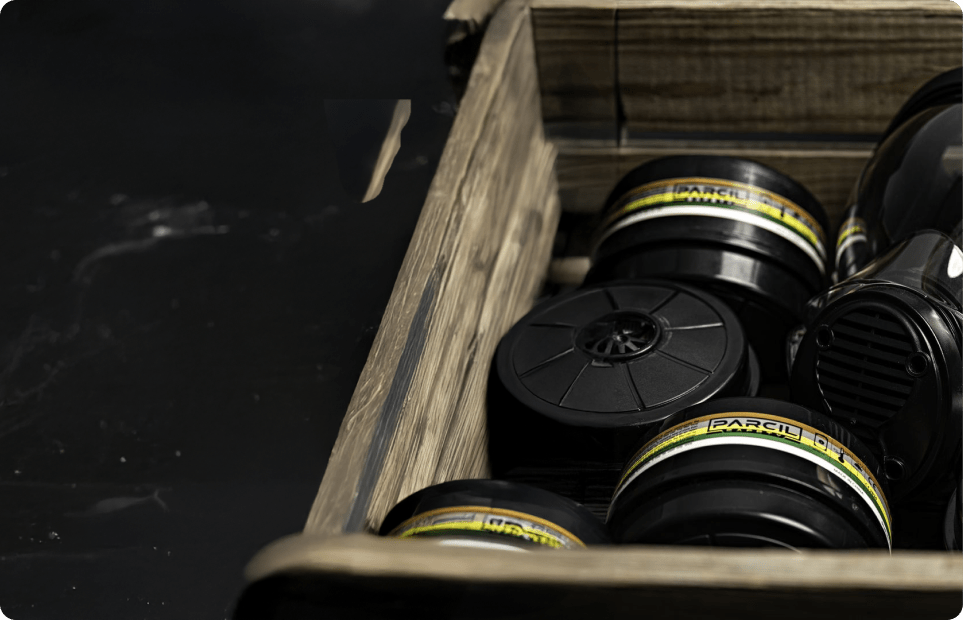A respirator mask must completely block your mouth and nose from direct exposure to potentially contaminated air. Contaminated air will enter your lungs if gaps or cracks exist in or around the mask. Inhaling toxic elements can cause difficulty breathing, irritation, pain, and even long-term health problems.
A leaking respirator mask can compromise your safety. Most scientific studies show that people experience leaks because their masks are improperly fitted to their heads or have worn-out seals. You must identify and address the cause of the leaks quickly to ensure your continued protection in hazardous environments. Otherwise, the consequences of inaction could be deadly.
The Signs of a Leak
How do you know if your respirator mask is leaking? Amateurs might not recognize the signs of a leaky mask until they suffer sickness. Fortunately, you don’t need to wait long if you can identify the common signs of a leaky mask before wearing it in a hazardous environment.
Here are the top three signs of a leak:
1) Fogginess on the Lenses
If you’re wearing a full-face respirator, you may see fogginess on the lenses covering your eyes whenever you exhale. This usually signifies that your exhaled air is not leaving the vent because of a gap between the mouth and eye area.
You cannot sustain this condition for too long, or you’ll breathe in more carbon dioxide than oxygen. Plus, you won’t be able to see anything through the foggy lenses without taking the mask off. If you’re still in a dangerous environment, such a move would be too risky for your health.
2) Strange Odors or Tastes
You should not smell or taste anything strange while wearing your respirator mask. If you do, it means there must be a leak somewhere that is causing you to smell or taste something from the environment. In other words, airborne contaminants have already bypassed the filter and entered your nose and mouth.
If the contaminated air is in your nose and mouth, you can assume it has entered your respiratory system. So, your health is already at risk by this point.
3) Discomfort or Irritation
If you feel discomfort or irritation while wearing your respirator mask, you have not correctly fitted it to your head. Good respirator masks are supposed to be comfortable without irritating your skin. If you feel irritation on your skin, an improper fit is the cause of the irritation and leakage.
Remove yourself from the hazardous environment immediately before attempting to readjust the fit of your respirator mask.
Troubleshooting Tips for Resolving Leaks
Have you confirmed that your respirator mask is leaking? Below are the top four troubleshooting tips for identifying and fixing leaks so that you can always maintain the highest level of protection.
1) Perform a Seal Check
One of the most common causes of a leak is an untight seal. Cover the filter openings with your fingers to check the seal, and gently inhale and exhale. If the mask is sealed correctly, your breathing will cause it to collapse slightly inward and outward. However, if it is not sealed properly, air will leak through the gaps in the seal without the mask collapsing.
Alternatively, you can cover the exhalation valve with your fingers and gently exhale. If the mask bulges outward slightly, it has a good seal. If not, there is a gap in the seal.
2) Adjust the Straps
Respirator masks are not made to fit everyone’s head equally. They come with adjustable straps so that people with different head sizes can adjust them to fit their heads comfortably and tightly.
However, many inexperienced users don’t know how to balance comfort and tightness when strapping their heads into respirator masks. Improper fits are the primary cause of loose seals, and air leaks through if the straps are not tightened enough.
Ensure the straps are comfortable but still tight enough to eliminate gaps. If you continue having trouble closing the gaps, you may have purchased the wrong size respirator mask. Find a mask with at least five or six adjustment points to fit small and large heads.
3) Inspect Seals and Valves
If you still have air leaks after properly strapping your mask, the cause could be a cracked or damaged component. Conduct a thorough inspection of the seals, valves, and straps to see if they show visible signs of degradation and wear and tear. Damage like this can happen if the respirator mask is old or frequently used.
The only solution is to replace the cracked or damaged components with new ones. If you have any questions about how to do this, read the owner’s manual for instructions. You must securely align and attach every replacement component to ensure it meets the manufacturer’s standards.
4) Replace Filters
If your respirator mask's air filters are clogged or saturated with debris, you must replace them. Depending on how often you use the mask, the air filters will eventually get too dirty to be viable for protection. If you don’t replace the old or dirty air filters, the seal could be damaged, causing you to inhale contaminated air.
Not every air filter is the same. To ensure a perfect fit, shop for air filters compatible with your respirator mask. Detaching and attaching the air filters is relatively easy, but read the instructions for extra guidance if necessary.
Check the expiration date on your current and future air filters. Even if they appear in good condition, don't use them after expiration. Expired air filters don’t offer the same filtration efficiency as unexpired ones.
Shop for Replacement Components and Filters
Do you need the proper parts to maintain your respirator mask? Parcil Safety has a selection of filters, cartridges, and valves for various respirator masks. They can also help you resolve leak issues to enjoy maximum protection from your mask.




















Leave a comment
All comments are moderated before being published.
This site is protected by hCaptcha and the hCaptcha Privacy Policy and Terms of Service apply.